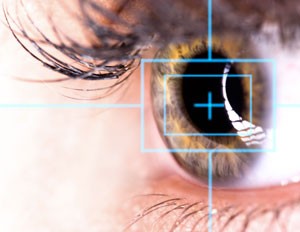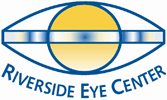Treatment of Diabetic Retinopathy
Treatment of Diabetic Retinopathy
 All patients with diabetes need to have regular eye exams because with early and aggressive treatment of Diabetic Retinopathy it is possible to maintain vision and prevent severe vision loss for many patients.
All patients with diabetes need to have regular eye exams because with early and aggressive treatment of Diabetic Retinopathy it is possible to maintain vision and prevent severe vision loss for many patients.
The National Institutes of Health and the National Eye Institute have funded a number of large scale, multi-center, controlled studies that have produced clinical care guidelines used by Dr. Whitaker at Riverside Eye Center. These include:
Early Treatment Diabetic Retinopathy Study (ETDRS) (http://clinicaltrials.gov/ct2/show/NCT00000151),
Diabetes Control and Complications Trial (DCCT) (http://diabetes.niddk.nih.gov/dm/pubs/control/)
Diabetic Retinopathy Study (DRS) ( http://clinicaltrials.gov/ct2/show/NCT00000154)
Dr. Whitaker uses the results of these studies to guide patients in the treatment of Diabetic Retinopathy since with early treatment it is possible for patients with Diabetic Retinopathy to have only half the likelihood of losing vision as compared to those patients who fail to receive early treatment.
About Diabetic Laser Treatment
Nonproliferative Retinopathy & Laser Treatment
During the early stages of Mild Nonproliferative Retinopathy, Moderate Nonproliferative Retinopathy and the beginning of Severe Nonproliferative Retinopathy, it is not likely that you will need Laser Treatment, unless you have Diabetic Macular Edema.
However, in order to prevent the progression of Diabetic Retinopathy it is quite important to maintain good overall health. First, tight control of blood sugar levels is key for protecting the health of the small blood vessels. Patients should work to reduce any and all risk factors for vascular disease including controlling their blood pressure, not smoking, reducing dietary fat consumption to lower cholesterol and triglycerides and exercising regularly.
Proliferative Retinopathy & Laser Treatment
Proliferative Retinopathy is treated with a Retinal Laser Photocoagulation procedure called “Scatter Laser Treatment”. The goal of Scatter Laser Treatment is to shrink abnormal blood vessels. Dr. Whitaker will place approximately 1,000 to 2,000 laser spots in areas of the Retina away from the Macula, causing the abnormal blood vessels to shrink. Since Scatter Laser Treatment requires a large number of laser spots, often Dr. Whitaker may use two or more sessions to complete the laser treatment.
Sometimes patients who have had Scatter Laser Photocoagulation will experience some loss of their side or peripheral vision, some loss of night vision and a decrease in color vision. However, Scatter Laser Treatment is necessary to preserve the rest of your vision and stop the progression of the disease.
Scatter Laser Treatment works best when it is applied before the fragile, new blood vessels have started to bleed. This is why it is critical to have regular, comprehensive dilated eye exams. Even when bleeding has started, Scatter Laser Treatment may still be possible, depending on the amount of bleeding.
Diabetic Macular Edema & Laser Treatment
Diabetic Macular Edema is best treated with one of two types of Retinal Laser Photcoagulation procedures: “Focal Laser Treatment” and “Grid Laser Treatment. Focal Laser treatment is used to close leaking microaneurysms in a limited area and Grid Laser treatment is used to treat a more general swelling in the Macula (http://www.medterms.com/script/main/art.asp?articlekey=16569).
With either Laser Treatment for Macular Edema, Dr. Whitaker will place as many as several hundred laser spots in the areas of retinal leakage surrounding the Macula. These spots act to slow the leakage of fluid and reduce the amount of fluid in the Retina. It is usually possible to complete these Laser Treatments in one session, however depending on the results additional treatment may be necessary.
You may need to have Laser Treatment for Macular Edema more than once to control the leaking fluid. If you have Macular edema in both eyes and require laser surgery, generally only one eye will be treated at a time, usually several weeks apart.
Laser treatment of Diabetic Macular Edema works to stabilize vision. In fact, Laser Treatment may reduce the risk of vision loss by 50 percent. In a small number of cases, if vision is lost, it may be improved.
Proliferative Retinopathy & VEGF Inhibitor Injections
Proliferative Retinopathy is characterized by the growth of new blood vessels or “neovascularization”, on the Retina in response to the lack of oxygen supply being caused by blockages in the tiny blood vessels. The stimulus for the formation of these new blood vessels is the release of a chemical called Vascular Endothelial Growth Factor. In certain patients, Dr. Whitaker may recommend the use of a therapeutic injection of a Vascular Endothelial Growth Factor Inhibitor such as Avastin, either in conjunction with Laser Treatment or by itself, in order to attempt to reduce or even reverse the formation of the neovascularization and proliferation of blood vessels. Anti-VEGF Injections can be used in selected patients to prevent, halt and reverse the risk to sight in patients with Diabetic Retinopathy.
